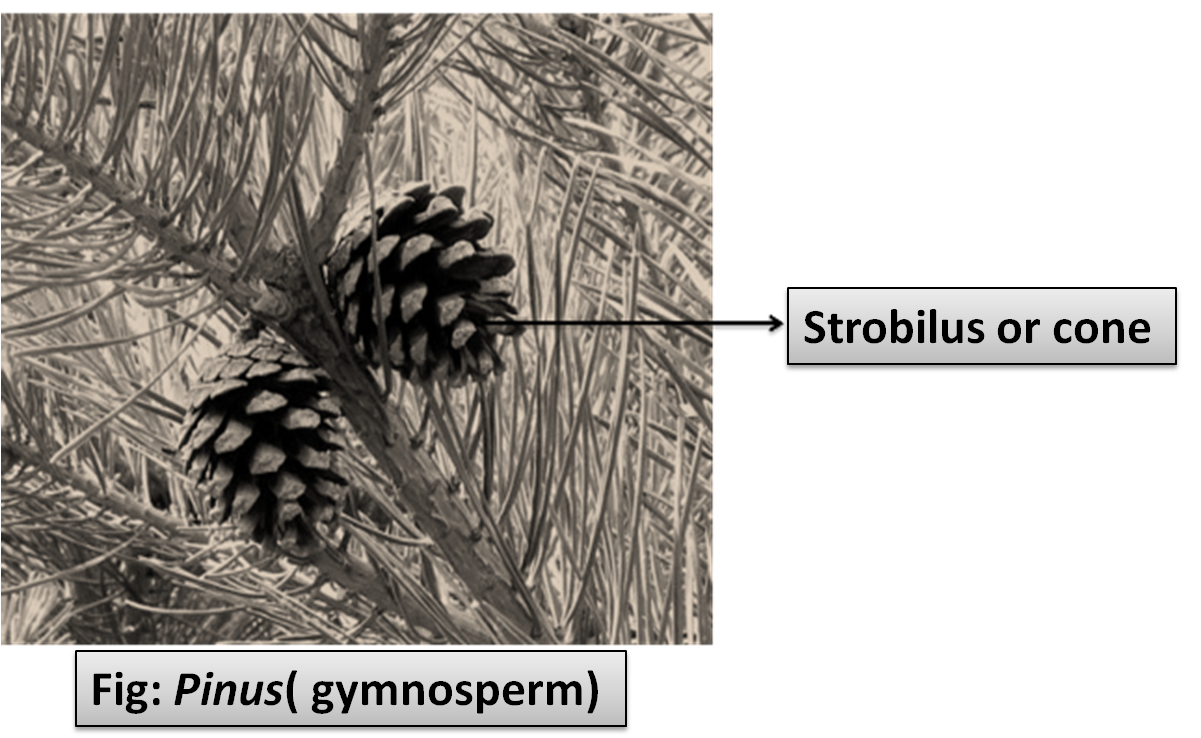
In the female cone of Pinus
(a) There are two sessile ovules at the basis of each ovuliferous scale.
(b) Each ovule is anatropous.
(c) The nucleus is surrounded by two integuments.
(d) All the megaspore produced by the revision of the megaspore mother cell are.
Answer
483k+ views
Hint: A cone is an organ on a plant that belongs to the division Pinophyta or conifers that contains the reproductive structures. The familiar woody cone is the female cone that produces seeds and is woody in nature.
Complete answer:
In the female cone of pinus, bract scales and ovuliferous scales are present, it carries two sessile ovules at the basis of each ovuliferous scale. The ovuliferous scale is woody and it has two sessile ovules on the upper surface. A cone is the part of the reproductive organ in plants belonging to the division Pinophyta or conifers.
Male cones bear pollen are covered with many fertile scales, each of which bears two pollen sacs. Whereas female cones bear ovules, borne on the same tree, consists of several spirally arranged bracts which are modified leaves. Each bract is located below a scale with two ovules called potential seeds. In spring or early summer, the pollen sacs release pollen through longitudinal slits that reach the ovules through wind and fertilization takes place.

So, the correct answer is,'There are two sessile ovules at the basis of each ovuliferous scale.'
Note: -The name "cone" is derived from the fact that the shape in some species resembles a geometric cone. The individual plates of a cone are called scales.
-The female cone/megastrobilus/seed cone/ ovulate cone contains ovules. On fertilization by pollen, ovules become seeds.
-The female cone structure is more markedly different between the different conifer families and is often crucial for the identification of many species of conifers.
Complete answer:
In the female cone of pinus, bract scales and ovuliferous scales are present, it carries two sessile ovules at the basis of each ovuliferous scale. The ovuliferous scale is woody and it has two sessile ovules on the upper surface. A cone is the part of the reproductive organ in plants belonging to the division Pinophyta or conifers.
Male cones bear pollen are covered with many fertile scales, each of which bears two pollen sacs. Whereas female cones bear ovules, borne on the same tree, consists of several spirally arranged bracts which are modified leaves. Each bract is located below a scale with two ovules called potential seeds. In spring or early summer, the pollen sacs release pollen through longitudinal slits that reach the ovules through wind and fertilization takes place.

So, the correct answer is,'There are two sessile ovules at the basis of each ovuliferous scale.'
Note: -The name "cone" is derived from the fact that the shape in some species resembles a geometric cone. The individual plates of a cone are called scales.
-The female cone/megastrobilus/seed cone/ ovulate cone contains ovules. On fertilization by pollen, ovules become seeds.
-The female cone structure is more markedly different between the different conifer families and is often crucial for the identification of many species of conifers.
Recently Updated Pages
Glucose when reduced with HI and red Phosphorus gives class 11 chemistry CBSE

The highest possible oxidation states of Uranium and class 11 chemistry CBSE

Find the value of x if the mode of the following data class 11 maths CBSE

Which of the following can be used in the Friedel Crafts class 11 chemistry CBSE

A sphere of mass 40 kg is attracted by a second sphere class 11 physics CBSE

Statement I Reactivity of aluminium decreases when class 11 chemistry CBSE

Trending doubts
The correct order of melting point of 14th group elements class 11 chemistry CBSE

One Metric ton is equal to kg A 10000 B 1000 C 100 class 11 physics CBSE

What organs are located on the left side of your body class 11 biology CBSE

Define least count of vernier callipers How do you class 11 physics CBSE

The combining capacity of an element is known as i class 11 chemistry CBSE

Find the image of the point 38 about the line x+3y class 11 maths CBSE




